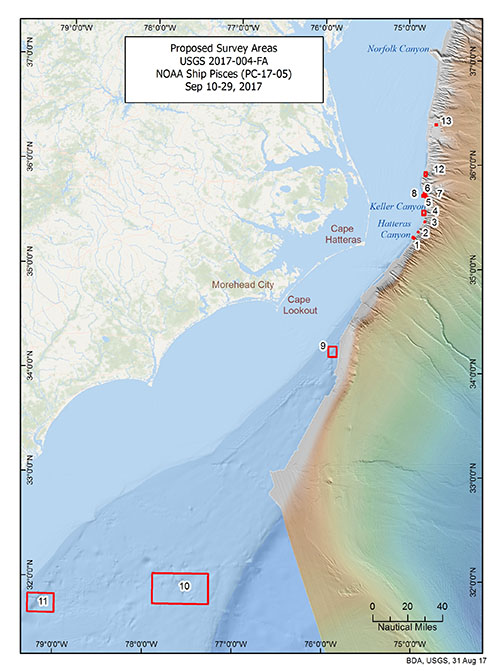

DEEP SEARCH will target coral, canyon, and seep habitats between 30-130 miles offshore the coasts of North Carolina, South Carolina, and Georgia. Map courtesy of DEEP SEARCH 2017, NOAA-OER/BOEM/USGS. Download larger version (jpg, 2.7 MB).
The DEEP SEARCH project is a multi-year, interagency study that will focus on the exploration and investigation of deepwater biological communities in U.S. federal waters of the northwest Atlantic Ocean.
Deep-sea habitats along the U.S. continental margin host complex, rugged seafloor features that include submarine canyons, cold seeps, and deep-sea coral forests. These ecosystems support biologically diverse communities that are poorly understood.
Maintenance of biodiversity is critical to the function and sustainability of these deepwater areas that provide numerous ecosystem services (fundamental life-support processes upon which all organisms depend). Loss of deep-sea biodiversity could have long-term, damaging effects to large expanses of the deep seafloor, the overlying water column, and to human health. For this reason, DEEP SEARCH partner scientists are working to:
These efforts to better understand the functional role of submarine canyons, hydrocarbon seeps, and coral habitats will advance scientific knowledge and inform future management decisions in the region.
The goal of the first expedition aboard NOAA Ship Pisces is to groundtruth several seep targets (Figure 1) and to image and map seeps, canyons, and hard bottom features located between Virginia and Georgia. Specific expedition objectives include: